20D.40.125 Town Center District.
20D.40.125-010 Intent.
(1) The Town Center district consists of three subareas as shown and described below: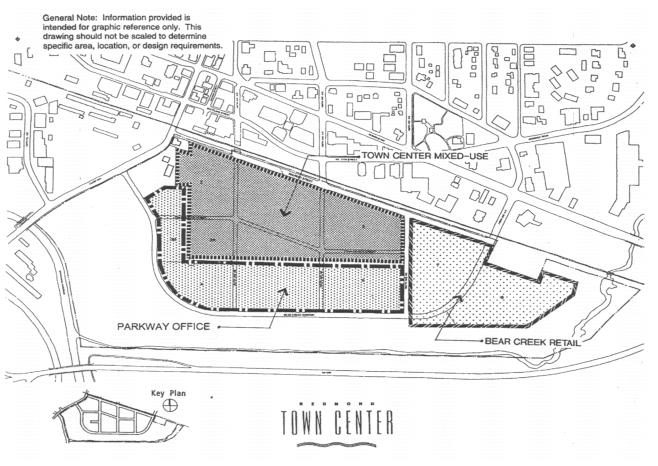
(a) The Town Center Mixed-Use area design concept stresses a pedestrian-oriented, open-air complex that mirrors the existing Old Town transportation network and the architectural character and scale of the historic portion of the Downtown neighborhood. Primary design features for the Town Center Mixed-Use area include storefronts along roadways, curbside parking, pedestrian plazas, and sidewalk designs that integrate into building architecture. (See Figures 1, 6, and 7.)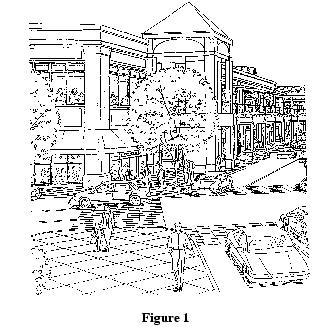
(b) The Parkway Office area design concept features multi-level office buildings and an urban gateway facing SR 520. Building height, location, and architectural character are intended to create a strong urban perimeter and a varied urban texture connecting the site with the Downtown. (See Figure 2.)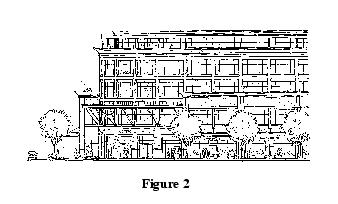
(c) Bear Creek Retail area provides for auto-oriented retail tenants. The freestanding buildings with surface parking are distinct from the other two areas. However, architectural character, featured design elements, and pedestrian linkages incorporate a design commonality with the rest of the site. (See Figure 3.)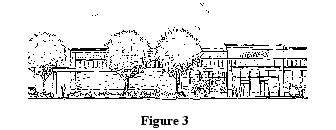
(2) Gateway to Downtown. The Parkway Office area also functions as a gateway to the City from SR 520. Development in this area should complement the other components of this gateway, Marymoor Park, and Bear Creek, by providing attractive, interesting urban activity. Development should be consistent with the natural environment by minimizing glare, providing indirect lighting, avoiding intense signage, and providing a soft edge where the urban and natural environments meet. (See Figure 4.)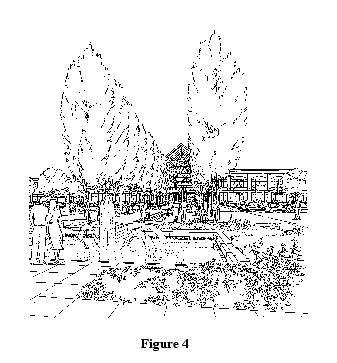
(3) Downtown Integration. Connection to existing roads, including landscape treatment, road surface, sidewalk size and placement, should respect and extend the existing grid system, streetscape, and character consistent with current standards and regulations. Development in the design area should further City goals for the following subareas:
(a) Leary Way. Leary Way between the Sammamish River and the BNSF right-of-way should remain as a “green gateway” to the City of Redmond.
(b) Northern Boundary – Leary Way to 164th. Building siting should maintain continuity of building frontage in order to integrate new development with the Old Town district.
(c) Northern Boundary – Leary Way to 170th Avenue.
(i) This area should provide linkage capability between existing public roadways north of BNSF right-of-way and private roadways south of same. These new alignments should provide extension of the established visual corridors.
(ii) New connections on the site to existing north/south roads in this area should be compatible with the character of the existing older improvements.
(iii) Retail buildings located at the northern edge of the site within the Town Center Mixed-Use area will establish functional and visual continuity with the Downtown. The character of the new buildings will be compatible with older existing buildings. (See Figures 5 and 8.)
(d) Bear Creek.
(i) The edge along Bear Creek should be kept as a natural area, with uses limited to passive activity and trail/pathway connections.
(ii) Signage in this area should be limited to traffic, safety, and directional information, or be consistent with the public recreational use of the area.
(iii) Structures consistent with and supporting passive use of this area may be allowed, but should be kept to a minimum.
(e) Sammamish River.
(i) The edge along the Sammamish River should serve as an extension of existing activity on the Sammamish River Trail just north of this design area. Uses should include trail and pathway activities.
(ii) Signage should be limited to traffic, safety, and directional information or be consistent with the public recreational use of the area.
(iii) Structures consistent with and supporting trail/pathway activities may be allowed, but should be kept to a minimum.
(f) BNSF ROW – Pedestrian Crossings. Design and construct City-approved architectural/urban design features, walkways, and landscaping on 164th Avenue NE and other locations as determined to be necessary. (Ord. 2302; Ord. 1993)
20D.40.125-020 Design Criteria.
(1) Architectural Guidelines.
(a) Siting of Buildings. Buildings should be sited to enclose either a common space or provide enclosure to the street. Consideration should be given to the relationship between buildings and adjacent open space areas. All designs should appear as an integrated part of an overall site plan. (See Figures 6 and 7.)
(b) Building Form. The roofline of buildings should be modulated to avoid large areas of flat roof and should include interesting architectural features. Consideration should be given to the appearance from nearby hillsides. (See Figures 1, 3, 6, and 10.)
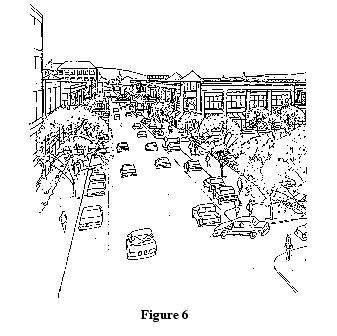
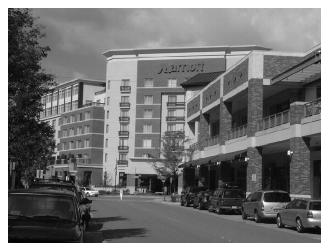
(i) Encourage varieties of shapes, angles, and reliefs in the upper stories of structures over four stories.
(ii) Large buildings should avoid continuous, flat facades.
(iii) Avoid the use of false fronts and large blank walls.
(iv) Facades should be divided into increments through the use of architectural features, such as bay windows, offsets, recesses, and other devices which break or minimize scale.
(v) The ground floor of buildings should provide pedestrian interest and activity. The use of arcades, colonnades, or awnings to provide pedestrian protection is encouraged. Column and bay spacing along street fronts should be provided no greater than 36 feet apart in order to maintain a pedestrian-oriented scale and rhythm. (See Figures 1, 5, 7, and 9.)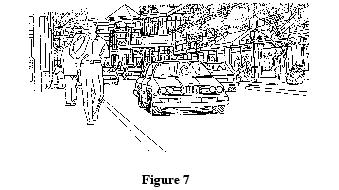
(vi) Building design should complement the character of adjoining Old Town.
(vii) Building material, colors, scale, and form should be harmonious with the surrounding environment in Old Town.
(viii) Buildings and facades in the Town Center Mixed-Use area should be a combination of brick, stucco-like finishes, smooth-finished concrete, and architectural metals. Building facades in the Town Center Mixed-Use and Parkway Office areas should have a greater proportion of voids (windows) than solids (blank walls) on pedestrian levels. Buildings and facades in the Bear Creek retail area should be primarily masonry products with concrete and architectural metals used for detailing if desired. In all design, there should be emphasis upon the quality of detail and special form in window treatments, columns, eaves, cornices, lighting, signing, etc.
(ix) Buildings and the spaces between them should relate easily and openly to the external public areas or plazas.
(x) The scale of all structures in relationship to other structures and spaces is important. The scale should be two to three stories in the retail core. Some variation in heights contributes to the variety and complexity of the environmental experience, and is encouraged. (See Figures 1 and 6.)
(xi) The development of ground level viewpoints on each building level which take advantage of solar access and views of the site’s open spaces is encouraged.
(xii) The integrity of a building as an individual structure or as part of a series of buildings should be respected.
(xiii) Buildings as a whole should be seen as significant architectural elements.
(xiv) Storefront design and materials should be allowed to be unique while maintaining the character of the building facade of which they are a part.
(c) Building Entry. Orient building entrances to the street in a manner which provides easily identifiable and accessible pedestrian entryways. Highlight building entrances through landscape or architectural design features. Building entries should be designed in conjunction with the landscape treatment of pedestrian ways in the parking areas that directly relate to the entry.
(d) Public Art. Encourage public art in public areas of the Town Center district, particularly in and around the Town Center Mixed-Use area.
(e) Building Orientation. Uses in the Town Center district should be oriented externally as well as internally (as is applicable) by using outward-facing building facades, malls, entrances, and other design techniques.
(i) Buildings in the Town Center Mixed-Use and Parkway Office areas should abut the sidewalks on at least one side and orient the primary entrance, or entrances, toward the street.
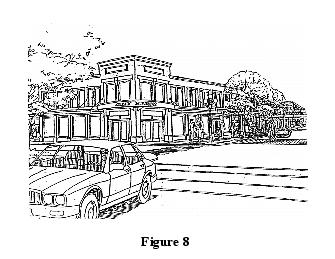
(f) Building Colors and Materials. Building colors and materials shall be selected to integrate with each other, other buildings in the Old Town district, and other adjacent commercial areas, while allowing a richness of architectural expression for the various buildings.
(i) Buildings should be constructed of materials that minimize light reflection and glare.
(ii) Care should be taken to avoid clashing colors on individual buildings and between adjacent buildings.
(g) Windows and Displays. Windows and display areas shall be located along pedestrian routes to enhance the pedestrian experience. (See Figures 5, 7, and 9.)
(i) Storefronts should be visually open wherever practical. Stores should use enough glass so that the activity inside the store is obvious to the passerby. In all cases, merchandise should be easily visible to pedestrians.
(ii) Windows shall be provided on the street level in the Town Center Mixed-Use buildings rather than blank walls to encourage a visual and economic link between the business and passing pedestrians. A minimum of 60 percent of ground floor facades facing streets in the Town Center Mixed-Use area shall be in nonreflective, transparent glazing. Where windows cannot be provided, artwork in window boxes may be used with site plan review approval. (See Figures 5, 7, and 9.)
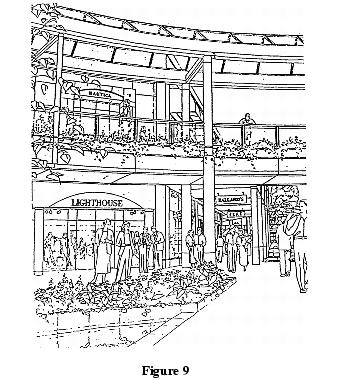
(h) Future Development Pads. Future development pads shall be designed to relate to the rest of the project’s architecture and will provide pedestrian-scale exterior features.
(i) Design Consistency. Each phase of the development shall be designed to be consistent with, but not necessarily the same as, the balance of the project architecture, including materials, colors, and general style.
(j) Pedestrian Features. Provide pedestrian-scale external features, including such items as window and glass display cases, street furniture, and covered walkways, and avoid large blank walls.
(k) Outdoor Pedestrian Areas. The outdoor pedestrian areas shall include special paving treatments, landscaping, and seating areas. (See Figures 1 and 4.)
(i) Outdoor and ground floor areas should be designed to encourage outdoor activities, such as vendors, art displays, seating areas, outdoor cafes, abutting retail activities, and other features of interest to pedestrians.
(l) Site Entrances. Entrances to Town Center development shall be emphasized with landscape treatments to strongly indicate the pedestrian orientation of these areas.
(i) Architectural/urban design treatment of 166th Avenue NE shall encourage pedestrian circulation from the project to the Cleveland Street Retail area.
(m) Rooftop Mechanical Equipment. Rooftop mechanical equipment will be screened in a manner which enhances the overall architectural design, and rooftops will be of a color that reduces glare and other types of visual impact on the adjacent residentially developed hillsides.
(i) Rooftops should incorporate features which soften rectilinear forms and effectively screen mechanical equipment from view.
(2) Transportation Guidelines.
(a) Vehicular.
(i) Street Configurations.
(A) Streets that are above existing grade should be designed in a manner to reduce visual impact of pavement area such as using landscaping or berms.
(B) Encourage alignment of all streets to minimize the removal of all existing significant, healthy trees.
(C) Streets should not be wider than four travel lanes with the appropriate number of lanes at intersections between the district and areas targeted for integration with the Downtown.
(D) Vehicular circulation shall relate the various uses on the site to each other. Streets shall be designed to enhance viability of the project components.
(E) Vehicle access to parking areas should be designed to minimize interaction of vehicles with pedestrians.
(ii) Parking – Surface.
(A) Where possible, locate parking behind buildings and away from areas of high public visibility. Landscape and screen surface parking areas visible to the public.
(B) Parking areas should include landscape areas and be designed to minimize long, straight, monotonous rows. The size and location of parking areas should be minimized and related to the group of buildings served.
(C) Parking areas should include a clear circulation network to guide pedestrians to the building entrances.
(D) Visual impact of surface parking areas should be minimized from the SR 520 corridor.
(E) Landscaping shall be provided to screen surface parking areas and provide transition between the project and surrounding areas, particularly when viewed from SR 520, Leary Way, and adjacent hillsides.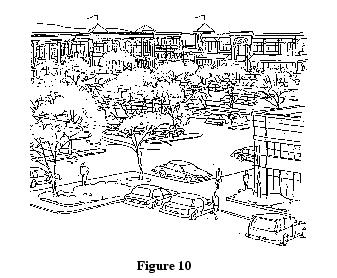
(F) Parking lots should be landscaped to screen parking and provide visual relief from large asphalt surfaces.
(G) Pedestrian access from parking areas should be safe and clearly defined.
(H) Landscaped medians should be provided where access and traffic allow.
(I) Conflict between pedestrians and automobiles should be minimized by designing streets to provide well-defined pedestrian walkways and crosswalks that reduce vehicle speeds.
(J) Open space and landscaping should be coordinated and linked wherever possible, particularly in relation to public areas and the pedestrian system.
(K) To minimize visual impacts where surface parking is utilized, project design should incorporate screening and landscape treatment of surface parking areas.
(L) Design and locate parking areas in a manner that will break up large areas of parking and encourage shared parking with existing Downtown uses.
(M) Patrons of the retail center shall be allowed to use parking while patronizing other businesses in the Downtown. No rules, signage, or penalties shall be enacted by Town Center to preclude this parking allowance.
(iii) Parking – Structured.
(A) Structured parking should be designed to avoid undifferentiated planes. The scale of parking structures should be modulated by interruptions of the facades, setbacks, and lowering the first level below the existing grade (where the water table allows) to reduce total height.
(B) Facades of parking structures should include a landscape treatment in addition to architectural screening from the SR 520 corridor.
(C) Parking structures shall have landscaping around the perimeter which will correspond to adjacent land uses and activities. Landscaping shall include, but not be limited to, a combination of shade trees, evergreen trees, shrubs, groundcovers, deciduous native and ornamental shrubs, and vines to further screen the structures.
(D) The top floor of parking structures should include landscape screening in areas such as along the cornice and on the deck, either by trees or a screening trellis treatment.
(E) Provide walkways in parking floors which have curbs or other barriers to protect from vehicular intrusion.
(F) For security, pedestrian routes should be visible and avoid enclosed, hidden areas. Emergency call boxes should be available.
(G) At least 50 percent of the parking provided for the entire site should occur in parking structures. The ratio of minimum structured parking shall be maintained for all phases of development of the Town Center Mixed-Use and the Parkway Office areas.
(H) Parking structures should be enclosed with retail or office uses on the exterior, or where this enclosure is not feasible, the visual impact should be softened with landscaping or screening.
(b) Pedestrian.
(i) Linkages.
(A) Link proposed development to walkways, trails, and bicycle systems in the surrounding area by connecting and lining up directly to existing linkages, closing gaps and treating crossings of barriers, such as the railroad, Bear Creek Parkway, and driveways, with special design treatment, minimizing barriers, designing with consistent materials, widths and locations, and providing safe, easy, and clearly identifiable access to and along the linkages. Safe, convenient, and attractive connections to Marymoor Park, the Sammamish River Trail, and the Bear Creek Trail system should be provided.
(B) The sidewalk system shall be emphasized with landscape treatments to provide readily perceived pedestrian pathways through and around the Town Center district.
(ii) Sidewalks.
(A) When extending an existing sidewalk, the new walkway should meet current standards and regulations where there is sufficient right-of-way, and should be constructed of a material and dimension which are compatible with and improve upon the existing character.
(B) Sidewalks should meet similar standards to those of the approved pedestrian linkage system.
(C) Paving of sidewalks and pedestrian crossings should be safe and constructed of a uniform material that is compatible with the character of the district. The private use of sidewalk rights-of-way areas may be appropriate for seasonal cafe seating or special displays.
(D) Encourage alignment of new sidewalks to minimize the removal of all existing significant, healthy trees.
(iii) Arcades, Colonnades, Canopies.
(A) In areas of high pedestrian activity, devices for protection from weather are encouraged. Consistent treatment within a single area is also encouraged in order to provide a strong identity of space. (See Figures 1, 5, 7, and 9.)
(B) Buildings should be designed to provide for weather and wind protection at the ground level. Buildings fronting sidewalks should provide pedestrian weather protection by way of arcades, colonnades, or canopies a minimum of 48 inches in depth. The elements should be complementary to the building’s design and design of contiguous weather protection elements on adjoining buildings. Materials and design should engender qualities of permanence and appeal.
(C) Awnings or sunshades should be harmonious to the design of the building to which attached, and should be in keeping with the character of the building. Materials should be durable, long lasting, and require low maintenance. Back-lit awnings are discouraged.
(iv) Enclosed Malls. The design of enclosed malls should allow pedestrians through access during hours of retail center operation while still maintaining security.
(v) Trails – Pedestrian. Special design treatment and appropriate safety features should be afforded the pedestrian trail crossings at public rights-of-way and at the BNSF right-of-way tracks.
(vi) Trails – Bicycle. Facilities for parking and locking bicycles should be provided and be readily accessible from bicycle trails.
(vii) Trails – Equestrian. Width of the trail should be adequate for two riders side by side in order to avoid earth compaction and vegetation deterioration. Equestrian trails should be separate from pedestrian and bicycle trails.
(viii) Plazas/Pedestrian Malls. Plazas, pedestrian malls, and other amenity open spaces shall be developed to promote outdoor activity and encourage pedestrian circulation between the Town Center district and the balance of the Downtown.
(3) Landscape Guidelines.
(a) Urban Landscape Treatment. Building entries, primary vehicular entries, and building perimeters should be enhanced with landscaping which could include ornamental vines, groundcovers, shrubs and/or trees selected for their screening, canopy, spatial enclosure, and seasonal variation.
(b) Site Furnishings. Benches, kiosks, signs, bollards, waste receptacles, street vending carts, water fountains, lighting standards, perch walls, sidewalks, pathways, trails and special water features should be designed to be compatible elements of like materials and design.
(c) Perimeter Landscaping. Landscaping on the perimeter of the site will create a transition between the project and the surrounding area.
(d) Landscaping on Streets. Landscaping on streets should be simplified to allow adequate visibility from automobiles to businesses.
(e) Trees, Plants and Flowers. The use of potted plants and flowers as well as street trees is encouraged, but should not impede pedestrian traffic.
(4) Open Space Guidelines.
(a) Tree Retention and Open Space Landscaping. Preserve existing natural features, particularly healthy mature trees and stream courses.
(i) Preserve a minimum of 100 percent of all trees within the public access open space as identified in the Public Access Open Space Area Plan. This area includes the cluster of trees along the east side of Leary Way for the purpose of preserving the corridor’s green gateway image and the healthy trees along the Bear Creek and Sammamish River corridors. Trees that cannot be retained due to approved street and/or utility construction shall be replaced with native nursery stock of similar or like variety at a one-to-one ratio, with tree sizes in accordance with RCDG 20D.80.20-080, pursuant to a landscape plan approved in conjunction with site plan review. Trees removed as a result of construction activities which are intended to be preserved shall be replaced per RCDG 20D.80.20-080. Replacement trees shall be located in the immediate vicinity as is practical.
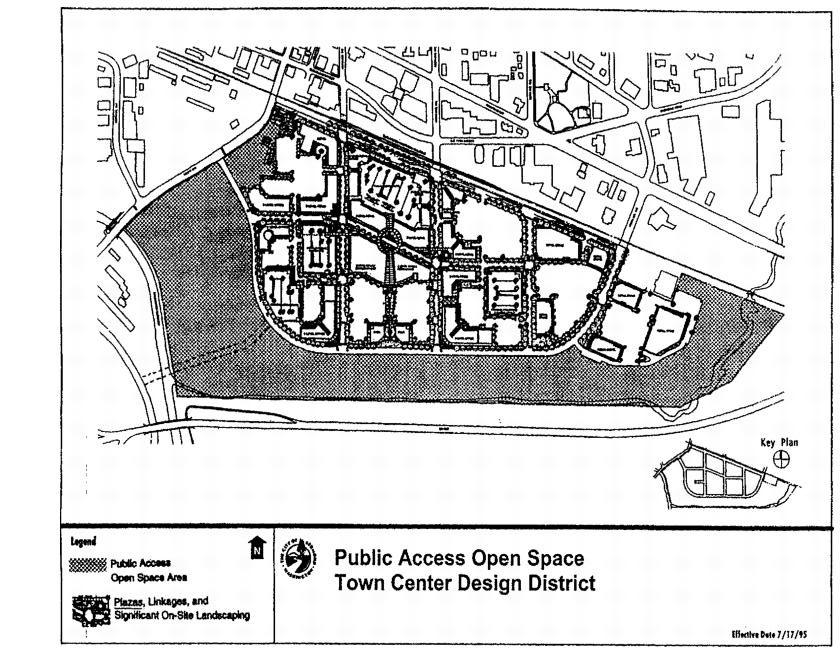
(ii) Minimize new grading in this area.
(iii) Install landscape screening between this open space area and adjacent parking areas.
(iv) Encourage passive recreation, including a walking trail, bicycle trail, seating and rest areas, pedestrian lighting, and site furnishings. Connections should be provided to the Justice White House, Town Center Mixed-Use area, Marymoor Park, Sammamish River Trail system, and other open space areas.
(v) The “soft edge” landscape treatment to the south of Town Center along Bear Creek shall provide for a true transition between the natural, riparian area of the creek to the more urban mixed-use retail area.
(vi) The informal nature of the west, south, and east portion of the site should be maintained by retaining native materials and random planting of compatible plant materials consistent with the Downtown neighborhood.
(b) Justice White House/Saturday Market. The areas around the Saturday Market and Justice White House shall be retained as open space. Areas at the Justice White House should encourage active and passive recreation. These areas should connect to other open spaces, trails, and the mixed-use retail area.
(c) Sammamish River. Open space should be retained along the Sammamish River and enhanced by:
(i) Providing grade separation for trails at all appropriate and feasible locations;
(ii) Making connections to other open space zones;
(iii) An ongoing storm water outflow monitoring program for private drainage systems. The monitoring program shall consider specific contaminants which may likely be present in the runoff and shall be revised periodically as appropriate.
(d) Bear Creek. Open space along Bear Creek should be retained and enhanced by:
(i) Encouraging passive recreation areas and activities and discouraging active recreation.
(ii) All storm water swales and recharge areas should be integrated with the natural environment.
(iii) Protecting vegetation of the riparian habitat in this zone by limiting access to the creek to designated access points.
(iv) Providing connections to Marymoor Park, the Sammamish River, other open spaces, and Town Center.
(v) Facilities within this area should include a pedestrian pathway, bicycle path, equestrian trail when required, passive water access area, seating, and site furnishings.
(vi) An ongoing storm water outflow monitoring program for private drainage systems. The monitoring program shall consider specific contaminants which may likely be present in the runoff and shall be revised periodically as appropriate.
(e) Public Access Open Space. Public access open space should be retained, enhanced and made available for public use in this district as shown in the Public Access Open Space Area Plan.
(i) At least 44 acres shall be preserved by easement to the City or controlled by other methods that would permanently assure the open space to the City. This Downtown public access open space shall serve as a visual amenity and passive recreation open space.
(f) Open Space Acreage. Public access open space as shown in the Public Access Open Space Area Plan shall include a minimum of 44 acres. This will include natural areas inclusive of the floodway, and the areas around the Justice White House and the Saturday Market.
(5) Signage Guidelines.
(a) Sign Kiosks. Sign kiosks, which provide direction to groups of tenants, are encouraged as a means for discouraging numerous individual directional tenant signs and providing clear directions. These kiosks shall be located in high-traffic areas and be consistent with the design theme of the development.
(b) Symbols and Colors. International symbols and colors should be used whenever applicable.
(c) SR 520 Signage. Signage for the subject proposal shall comply with the SR 520 Corridor Signage Policy adopted by the City Council.
(d) Signs will be evaluated according to the overall impact, size, shape, texture, lettering style, method of attachment, color, and lighting in relation to use, the building and street where the sign will be located, and the relationship of the sign to other signs and other buildings in the vicinity. Adherence to or enhancement of sight lines both parallel and perpendicular to the sidewalks will be considered. The primary reference will be to the average pedestrian’s eye-level view, although views into or down the street from adjacent buildings should be an integral feature of any review.
(e) Signs should be simple, clear, and direct. Extruded aluminum or plastic signs are not appropriate. Careful use of neon may be acceptable.
(f) Signs should not hide or obscure the architectural elements of the building.
(g) Signs attached to or hung from the arcades, colonnades, and canopies perpendicular to the sidewalk should be encouraged.
(h) Projecting, double-faced or three-dimensional signs may be allowed if they are integrated into the overall streetscape and do not destroy sight lines. Symbolic three-dimensional signs, such as a shaving mug, barber pole, pawn shop symbol, or other symbols illustrating the product being sold on the premises, are acceptable provided they meet other sign guidelines. When possible, signs should reflect the character and the use within the structure.
(i) Sign lighting should be energy efficient.
(6) Lighting Plan.
(a) A lighting plan and program which encourages nighttime pedestrian movement between the adjacent commercial areas, particularly Leary Way and 166th Avenue NE, shall be maintained.
(b) Parking lot and security lighting shall be screened by buildings and other means to minimize light intrusion onto the Sammamish River and Bear Creek.
(c) Street lighting should relate in scale to the pedestrian characters of the area. The design of the light standards and luminaries should enhance the design theme. (Ord. 2302; Ord. 1993)


